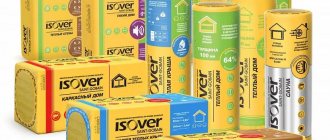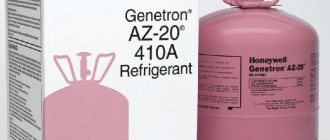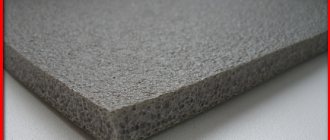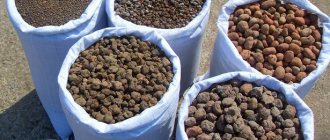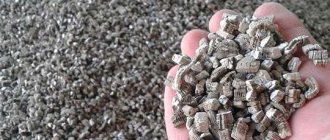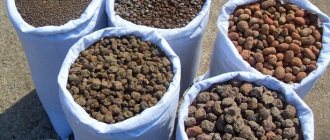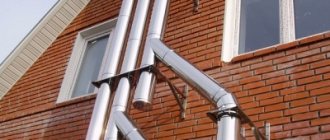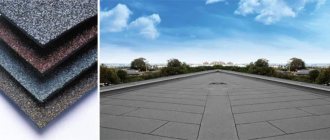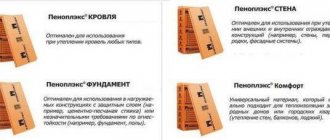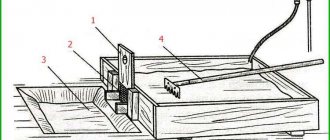A rich harvest is the dream of every modern summer resident. Today, gardeners are trying to keep up with the times, introducing new technologies, devices and materials on their plots.
Gardening stores offer a huge selection of soil mixtures for growing plants.
A novice summer resident, seeing a package labeled “vermiculite” in a gardening store, does not linger at the counter, not understanding where and why it is used
Varieties of mineral
There are several varieties of vermiculite, differing in chemical composition:
- Vaalite – contains compounds of magnesium, silicon, iron and aluminum.
- Lucasite - in addition to magnesium, iron, aluminum and silicon, contains chromium.
- Batavit – does not contain iron compounds.
- Istonite is an iron-free mineral, contains potassium, and differs from other varieties in its silvery-white color.
- Copper vermiculite – contains copper compounds.
Vermiculite expanded
When heated, vermiculite loses moisture and increases in volume up to 18-20 times, stratifying into light golden plates. Its chemical composition does not change. This mineral is called expanded vermiculite or agrovermiculite.
Vermiculite is divided into several grades depending on the size of the granules in the fraction.
| Brand | Granule size, mm | Weight of one cube. meters, kg |
| WWF – 0.5 | 0,16 – 0,63 | 200 |
| WWF – 1.0 | 0,315 – 1,6 | 150 |
| WWF – 2.0 | 0,7 – 3,0 | 125 |
| WWF – 4.0 | 1,4 – 5,0 | 100 |
| WWF – 8.0 | 2,5 – 10 | 100 |
Why the problem?
Some plant growers consider vermiculite almost a poison for plants. Like, 2-3 months, and the plants on the vermiculite substrate die, see for example. video clip:
Video: an example of plant death due to the thoughtless use of vermiculite
Such stories cause heated controversy, and the evidence is quite convincing on both sides. What's the matter? If you look into the audience comments, it turns out: a) supporters of “for” use vermiculite first. for young plants (seedlings, seedlings) and cuttings, or in open ground; b) opponents of vermiculite mostly use it indiscriminately (see below) in potted plants of certain species. From here it is clear that the use of vermiculite must be made taking into account both the properties of the substance itself and the conditions of its use.
Chemical composition
In mineralogy, micas are classified as complex aluminosilicates of unstable composition. Technical characteristics of expanded vermiculite and perlite are given in table. in Fig. below. The content of the components indicated in it is standardized by the technical specifications for the finished product, but besides them, vermiculite contains nickel, titanium, manganese, etc. compounds in negligible quantities. Of these, only manganese is a micronutrient for plants; Occasionally, traces of molybdenum and boron, also needed by plants, are found in vermiculite. The rest of the microimpurities are ballast, not always useful.
Chemical composition of expanded vermiculite and perlite
But it’s not only and not so much about ballast. Let's pay attention to the lines highlighted in red. Iron is also a microelement necessary for plants, but only in the 2-valent form Fe(II); Trivalent iron Fe(III) is useless, and its excess is harmful. Fe(II) is present in vermiculite in the form of oxide FeO; Fe(III) as oxide Fe2O3. The proportions of both vary greatly even in samples from the same deposit and therefore their ratio is not standardized.
Magnesium is a vital meso-element (part of chlorophyll), but in vermiculite it can be in large excess. In open ground this is not a problem: magnesium salts are easily leached and in direct light plants often lack it. But in a pot, magnesium will alkalize the soil, and with a lack of light, plants can deplete themselves by synthesizing excess chlorophyll.
Calcium is also a mesoelement; potassium is the main nutritional element. But their oxides, like sodium oxide, form alkalis in the presence of moisture. On open ground, this is again not a problem: vermiculite is a persistent mineral, leaches very slowly, and alkalis are mobile. But in general they have nowhere to go from the pot, and 2-3 months. the period is just sufficient for plants that love acidic soil to wither in alkaline soil: Saintpaulia violets, azaleas, dieffenbachias.
Granule fractions
Vermiculite is waterproof, insoluble in water, and leaches from the surface. The rate of release of alkalis from vermiculite into the substrate depends on the size of the granules according to a quadratic law: when the particle size decreases, say, 10 times, the alkalization of the soil accelerates 100 times.
Vermiculite granule fractions
Vermiculite for agricultural technology is produced mainly in 2 fractions: granules about 1 cm in size (about the size of a fingernail) and finely ground, see fig. Coarse-grained vermiculite is used in all cases except one - germination of seeds, cuttings and growing seedlings on a mixed neutral substrate, see below. If finely ground vermiculite is used in potted adult plants, the result will most likely be failure due to alkalization of the soil.
Alkalis are not always bad
Results of rooting cuttings in a substrate with vermiculite (b) compared with control (a)
As we see, there can be more potassium in vermiculite than in perlite. Potassium is known to promote root growth. Seeds, seedlings and young parts of adult plants (cuttings) that are on the brink of survival are much less sensitive to the composition and chemical reaction of the soil, but they need to take root as soon as possible. The main obstacles in this case are a lack of air for the developing roots and spores of pathogenic fungi, but they need an acidic environment for development. Using nutritious but soil-acidifying peat with finely crushed vermiculite alkalizing it as a substrate for germination and rooting (see below) gives impressive results: in Fig. on the right are the roots of the control group of cuttings a, treated with heteroauxin and rooted in the usual way, and group b was rooted in a mixture of vermiculite and peat with and without a growth stimulator.
Note: when is it better to use vermiculite for seedlings, seedlings and cuttings, and when to use perlite, see video:
Video: vermiculite and perlite, pros and cons
How to choose vermiculite for plants
The composition of vermiculite within the limits indicated above and the content of ballast microimpurities in it vary greatly depending on the origin of the raw material. The deposit where the original mineral was mined, its quality and suitability for various agricultural purposes, in some cases, can be determined by the type of product on sale.
Results of growing flower and vegetable crops on vermiculite
The best vermiculite for agricultural technology is light, slightly yellowish Ural (item 1 in the figure below). The ancient Ural mountains are reborn. Together with the temperate continental climate, the erosion conditions of vermiculite there are such that it contains predominantly iron. in the form of Fe(II), and magnesium is just enough for plants. Growing flower and vegetable crops in dry hydroponics with Ural vermiculite gives results comparable to those when using expensive growth stimulants that require regular use, see table. on right. The alkalization of Ural vermiculite is insignificant and can easily be compensated by adding peat infusion to the nutrient solution.
Types of vermiculite for agricultural technology
Kazakhstan vermiculite from deposits in the young mountains of the Alpine uplift is very similar to the Ural vermiculite, but a little paler, pos. 2, because It contains less Fe(II). But Fe(III) is also less, so this variety is well suited for dwarf and potted plants. It has virtually not undergone natural leaching, and therefore in dry hydroponics and pot culture it is suitable for plants that love or tolerate slightly alkaline soil. Application on open ground and for seeds, seedlings, seedlings - without restrictions.
Pinkish vermiculite from Altai and the old mountains of Europe (item 3) contains a lot of Fe(II), potassium and magnesium. This is the best substrate for germinating seeds and rooting cuttings. On vermiculite of this composition, nightshade seedlings grow best: tomatoes, vegetable (sweet) peppers (see video at the link: //www.youtube.com/watch?v=Stx-yDRxXKo).
Variegated vermiculite from the Kola Peninsula and Scandinavia (item 4) is similar in composition to the Ural and Kazakhstan, but contains a lot of potassium, sodium, calcium, magnesium and microimpurities. Good finely crushed for germination and rooting in a mixture with peat. Brown of subtropical origin (item 5) and red (“red”, item 6) tropical vermiculite are a less expensive alternative in substrates for the same purpose. They are not very suitable for open ground due to low moisture absorption, and are not very suitable for potted crops due to the high content of Fe(III) and alkali-producing components.
Useful agrotechnical properties
Chemical inertness, neutral acidity, resistance to high temperatures and the ability to absorb large amounts of moisture allow the use of vermiculite in various sectors of the economy.
Properties of the mineral due to which it has found application in agricultural technology:
- does not rot in water or soil;
- does not react with fertilizers;
- prevents mold formation;
- good heat insulator;
- durable, expiration dates are not established.
Where is it mined?
This natural material was accidentally discovered in the 19th century and has been explored and mined ever since. As already mentioned, vermiculite is a mineral whose deposits are found both in Russia - in the Krasnoyarsk Territory, on the Kola Peninsula, Irkutsk and Chelyabinsk regions, and in neighboring countries: in Kazakhstan, Uzbekistan, Ukraine. In addition, it is mined in Australia, India, South Africa, Uganda and the USA. In the state of Montana, near the town of Libby, the largest and most profitable American deposit of this mineral is located.
Advantages of using vermiculite in crop production
The quality of the soil improves. The amount of harmful chemical components is reduced.
There are a few more advantages:
- A good drainage agent, it prevents the soil from compacting and facilitates air access to the roots of plants.
- Protects roots from freezing.
- It retains moisture well, gradually releasing it into the soil.
- Reduces the likelihood of rotting and damage to the root system by fungal diseases.
Vermiculite enhances the effect of organic matter and mineral fertilizers. In rainy weather, the growth of moisture-loving weeds and moss is prevented
Minuses
When using small fractions of garden vermiculite, a large amount of dust is generated. This requires the use of protective equipment (gloves, goggles, respirator) when working with it. Makes it difficult to determine the presence of pests.
To avoid waterlogging of the soil, a revision of the watering schedule is required. When watering soil diluted with agrovermiculite with hard water, the acidity of the soil decreases.
Manufacturers
The Dmitrovskaya Thermal Insulation company produces slab and expanded vermiculite for construction.
Among the well-known manufacturers of vermiculite-based materials and slabs, the following domestic firms and companies stand out:
- LLC PKO Dmitrovskaya Thermal Insulation (city of Dmitrov). The main activity is the production of pierced and shaped products from vermiculite.
- Group of companies SFR (city of Kolpino). The main activity is the production and wholesale distribution of a wide range of various insulation materials.
- Specialists from the Leningrad region produce dry construction mixtures, expanded vermiculite, as well as a number of samples of materials for electrical purposes.
- The Vermit trading house from Chelyabinsk is engaged in the production and sale of fire retardant compounds and boards using vermiculite.
To this list can be added NPO Organika from Chelyabinsk and several other small companies that do not deserve special attention.
Mechanism of influence on seedlings
Growing vegetable crops using the seedless method is not applicable for most regions of Russia due to the climate. Growing seedlings helps reduce the growing season and increase productivity.
It is recommended to germinate seeds before sowing into seedlings in pure vermiculite brand VVF-1.0. Agrovermiculite is poured into a tray or box, watered, seeds are placed to a depth of about a centimeter, covered with film and placed in a warm place.
The sprouted seeds are rinsed with water and transferred to a mixture of mineral fraction VVF - 2.0 with soil. The recommended ratio of soil and agrovermiculite is 2:1. It is allowed to add peat or humus to the soil. This method of sowing seedlings accelerates germination by about 5-7 days.
Caring for seedlings and planting time are the same as without the use of vermiculite. Sprouts in soil with the addition of agrovermiculite are stronger, the number of leaves is usually 2-3 more.
What plants is it used for?
Increasing the moisture capacity and aeration of the soil has a beneficial effect on the root system of plants. Therefore, gardeners use it when growing potatoes. Tubers grow large even in drought if you add 100-150 grams of vermiculite to each hole when planting.
When picking seedlings, it is recommended to add two to three tablespoons of agrovermiculite to each planting hole. This helps maintain soil moisture levels and ensure air access to the roots. Thanks to this, the roots do not rot and young shoots grow faster.
Seedlings of fruit trees and bushes take root better if, when planting, you use vermiculite brand VVF-4.0 or VVF-8.0 at the rate of 30-35% of the total amount of soil in the hole.
Mineral grains absorb excess moisture and fertilizers and gradually release them to plants
When growing indoor plants, potting soil often hardens. This makes it difficult for the roots to reach air and moisture. When watering, beneficial substances are washed out of the soil.
In order to change the soil in pots less often, fine vermiculite is added to the soil mixture at the rate of 1 part mineral to 2 parts soil.
Instructions for use and dosage
The size of the fraction and the amount of agrovermiculite depend on the purpose for which it will be used in the garden plot or in indoor floriculture.
Vermiculite for seedlings
There is probably not a summer resident in the world who does not know how difficult it is to fight diseases and pests when germinating seeds in the soil. For them and for those who did not have time to defrost the soil for sowing in time, a story about how to use vermiculite for seedlings will be useful.
On pure vermiculite you can grow cucumbers, zucchini, eggplants, cabbage, tomatoes and peppers for seedlings.
During the period of seed germination to the first leaf, you can properly prepare the soil for picking.
Pour vermiculite into a two- to three-liter container, pour in a warm solution of a growth stimulator (Energen or HB-101) and mix. The mineral should be well saturated with liquid. If excess liquid has formed, it must be drained.
It should be remembered that excessive consumption of fertilizers reduces the germination of seeds, so the watering solution must be prepared strictly at the rate of 2 drops of fertilizer per one and a half liters of water.
Place the prepared vermiculite in small cups (no more than 100 ml in volume), two tablespoons in each, lightly compact and place 1-3 seeds (depending on the crop).
Sprinkle the seeds on top (1-1.5 tablespoons in each cup), compact again, cover with film and place the cups in a warm place. Favorable germination temperature is from 22 to 25 degrees. After the first shoots appear, picking must be done within 5-7 days.
For picking, mix ready-made nutrient soil for seedlings with agrovermiculite: 1 kg of mineral per 5 kg of soil, pour phytosporin for disinfection (1 tablespoon diluted with 10 liters of water), spread into cups, and deepen seedlings into prepared holes in the soil to the level of cotyledon leaves.
Soil with a loosening agent requires less watering. Otherwise, care is the same as for seedlings planted in regular soil.
Features of planting tomatoes and peppers
Number of seeds placed in a glass with vermiculite for germination:
- for peppers – no more than one seed;
- for tomatoes - no more than two seeds.
Dilution of soil for picking: baking powder should be no more than 30% of the total volume of soil, since the plants, being provided with moisture, will not receive enough nutrients.
After picking, the number of waterings is halved compared to seedlings growing in undiluted soil.
Mulching
It is always advisable to mulch beds, near-trunk circles of fruit trees, and soil in pots with indoor plants, since this procedure helps preserve the moisture necessary for the full development of plants.
A layer of agrovermiculite of the middle fraction, scattered over the soil surface in a layer of 1-2 centimeters, makes it possible to reduce the frequency of watering by half, and for unpretentious crops - by three times
Cuttings
When plants take root poorly during cuttings, this is most often due to dry soil or excess moisture. Vermiculite of small fraction (1-2 mm) is used for cutting even difficult-to-root plants. The microelements included in the mineral stimulate growth; cuttings are provided with the necessary amount of moisture and oxygen.
The loss of plants propagated by cuttings in pure vermiculite is usually no more than two percent, while up to 20% of cuttings do not take root in the soil
Application in hydroponics
Hydroponics is growing plants without soil. Lightness, moisture capacity, durability and lack of toxins make agrovermiculite an indispensable filler for hydroponic systems.
Medium and large fractions (0.5 – 2 cm) are used for growing agricultural crops. A nutrient aqueous solution penetrates through the porous vermiculite plates, delivering all the necessary substances to the roots of the plants.
In such an environment, crops sown with seeds sprout well, and cuttings take root easily and with little loss. Nutrient solutions are replaced every 10 days, the composition depends on the type of crop and growth phase
What is vermiculite
Vermiculite is a natural mineral with a layered structure. Before processing, it appears as plate-like crystals. But vermiculite is familiar to us in the form of an airy, loose-scaled material of gray-beige shades with a silver-golden tint. It feels elastic to the touch, but at the same time soft, free-flowing and crumbles easily. This is what it becomes after heat treatment.
In agriculture, only processed vermiculite of different fractions is used. The largest fraction (the size of a pea), but in plant growing fractions are more often used - small or medium.
Color shades and fractions of vermiculite
Toxicity and safety precautions
Agrovermiculite is an environmentally friendly substrate that does not emit toxins that are harmful to human health. Small fractions form a lot of dust, the inhalation of which is undesirable, so it is recommended to carry out all work with gloves, safety glasses and respirators (can be replaced with medical masks).
Some gardeners, trying to save money, buy construction grade agrovermiculite instead of agrovermiculite - it is cheaper. But it is necessary to take into account that the building material may contain asbestos, which is harmful to health.
Therefore, when buying a soil disintegrant in a hardware store, you need to familiarize yourself with the composition and do not buy materials containing asbestos; use the rest only with the use of protective equipment
Vermiculite: description and composition
If you pick up vermiculite, visually it looks like multilayer mica.
When heated, the plates turn into filament-like granules. Hence its name vermiculite, which means “worm” in Latin. The porous structure makes it possible to accumulate and retain moisture. Which makes it an indispensable component in soil mixtures. The root system of indoor plants will not be in danger of drying out. At the right moment, the mineral releases moisture to the roots.
It contains useful oxides and impurities. In gardening, expanded vermiculite is mainly used, which is obtained by heating fine-grained ore. Valuable components of the mineral: calcium, magnesium, iron, etc. play a big role in the development and growth of domestic plants. The mineral is environmentally friendly and does not contain heavy metals. With a neutral reaction to alkalis, acids, does not disintegrate, does not rot.

